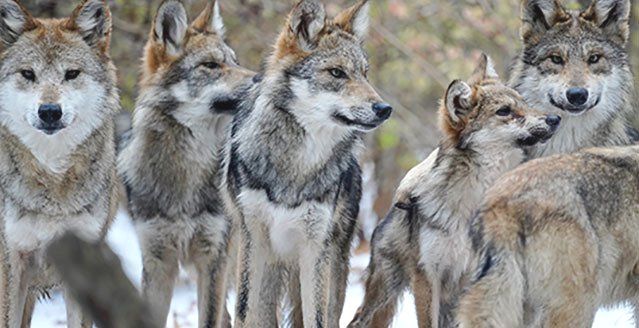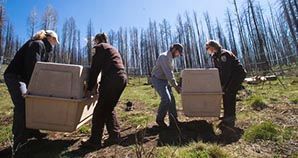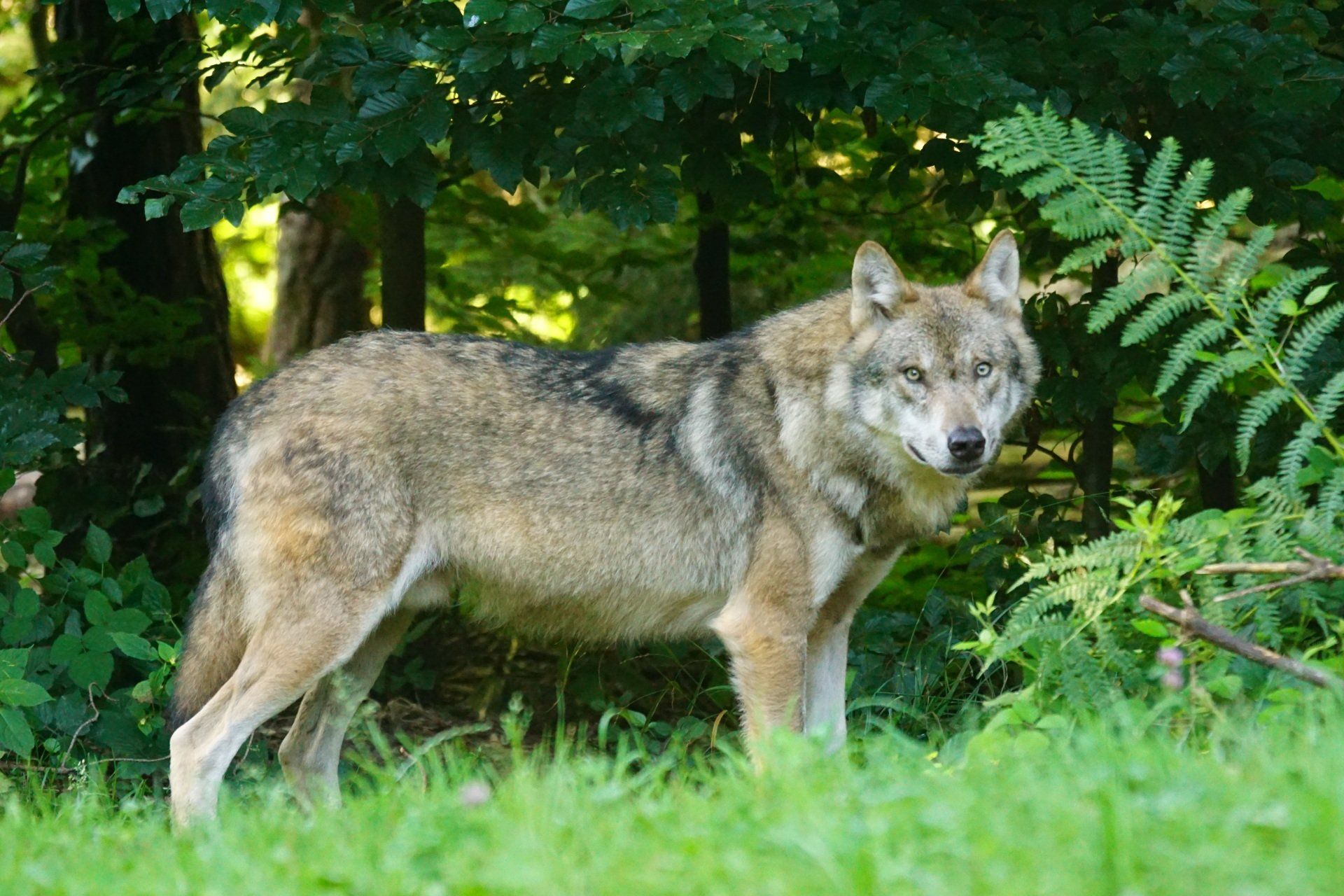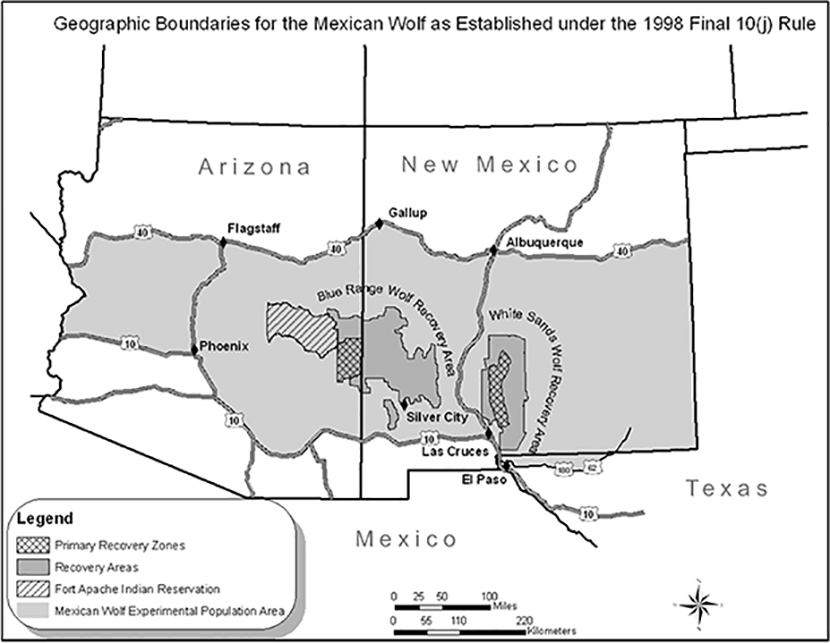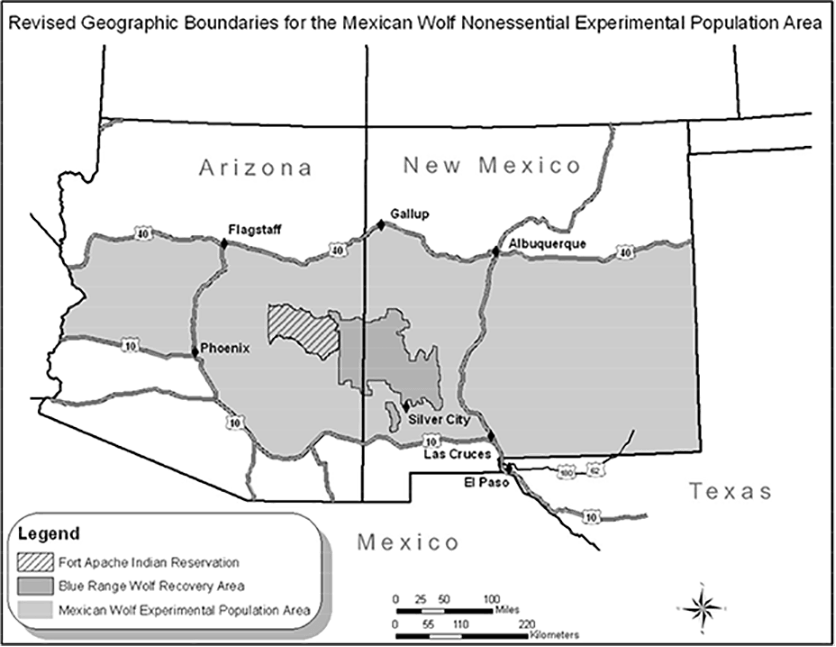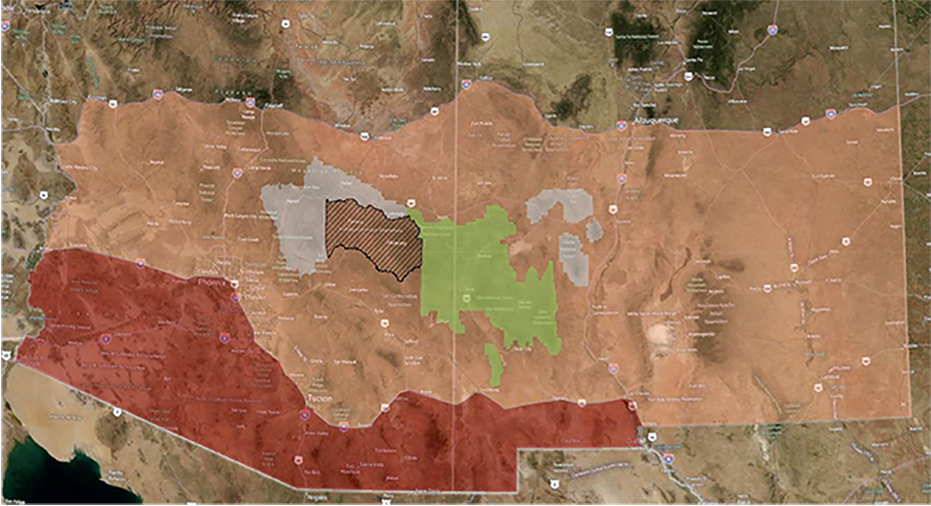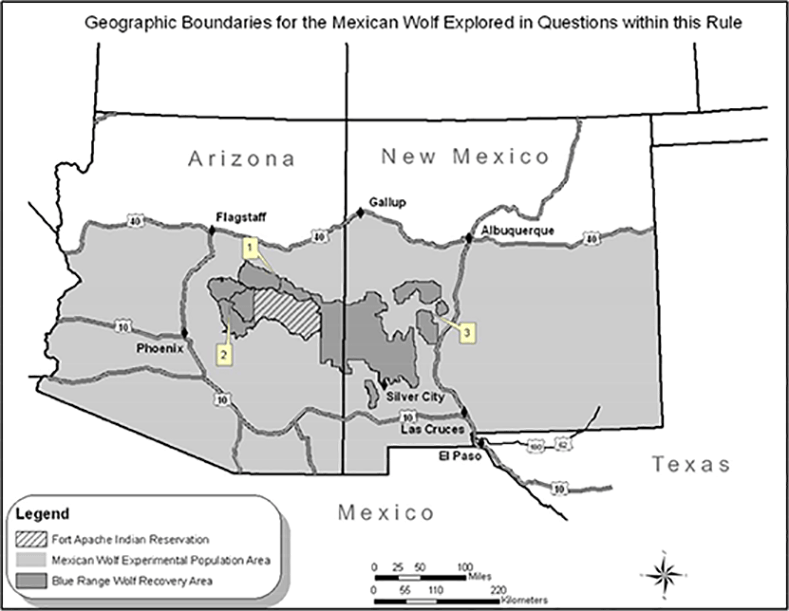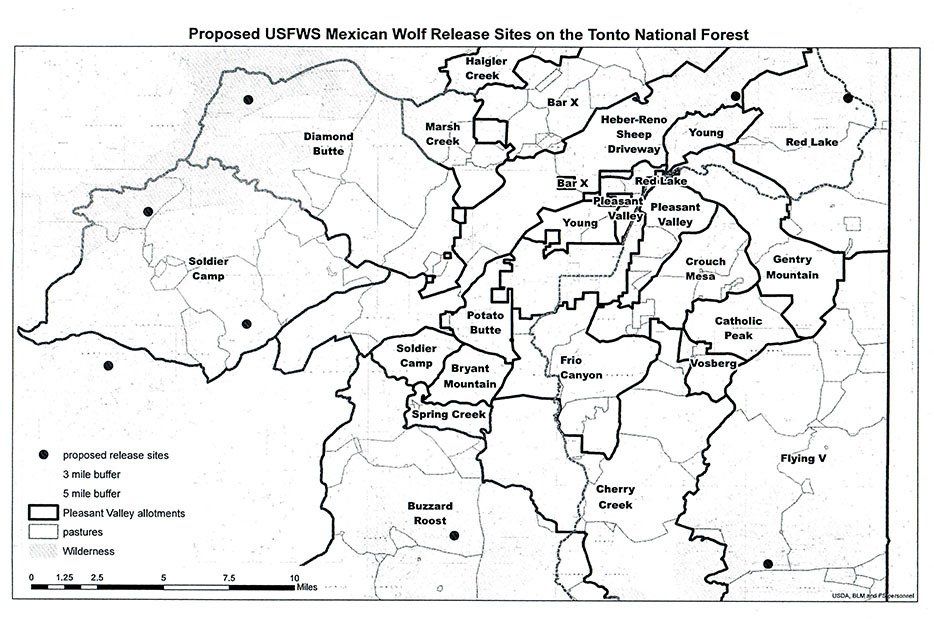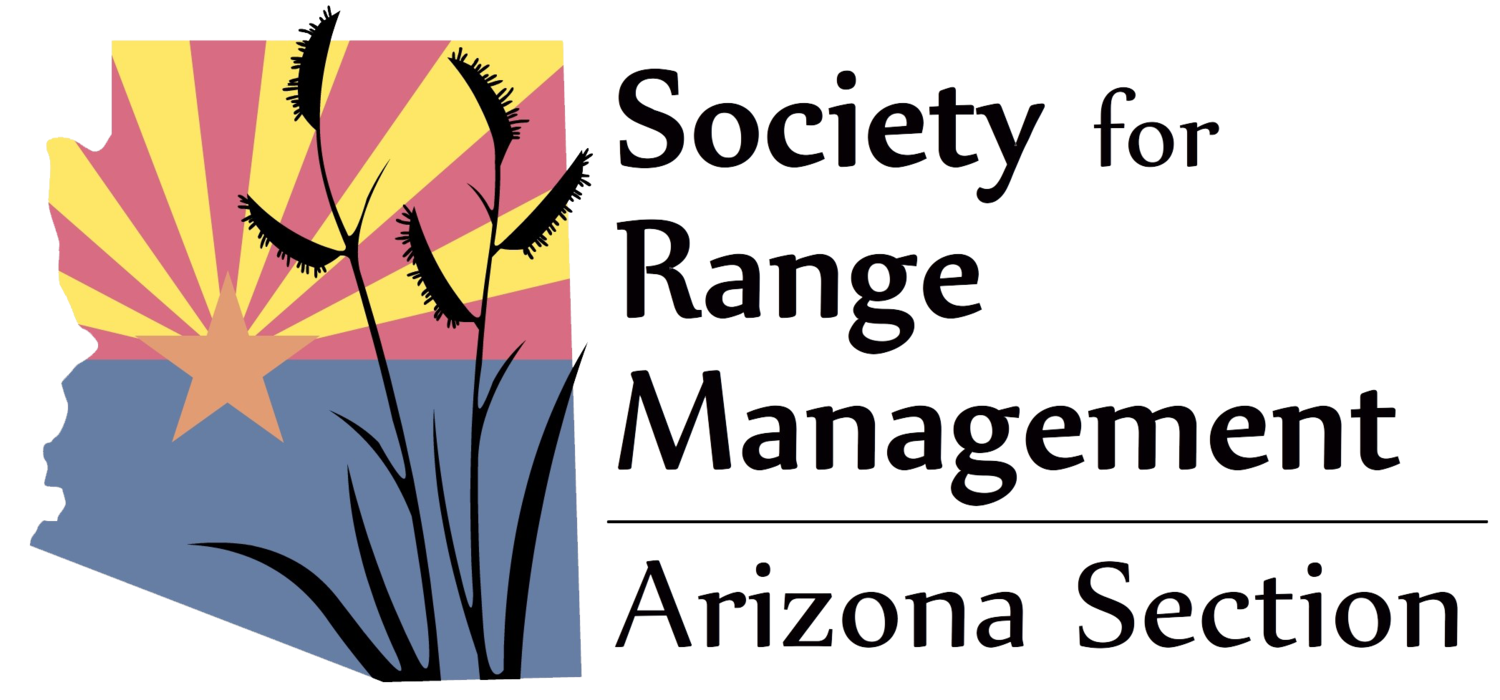Current Ag Issues
Mexican Gray Wolf
Mexican Gray Wolf Facts
How to tell a wolf from a coyote...…..
- Wolves are adept at determining prey vulnerability and the human victims of predatory attacks tend to be mainly on children.
- Recent proposals place wolf release sites where elk and deer populations are very low, and permitted cattle, including calves, horses and dogs are present.
- Wolves may attack a dog even when people are present and a wolf excited by the presence of a dog may be more likely to act aggressively toward people.
- Aggressive behaviors by wolves are often associated with habitation and food conditioning. The wolves planned for release have been raised by humans in facilities where they are habituated and food conditioned.
It is sometimes hard to tell the difference between wolves and coyotes, especially from a distance. Wolves are larger, bulkier, and stout on their feet. Coyotes are shorter, sleeker, and light on their feet. Look for a combination of characteristics.
Mexican Wolf Population Rises to at Least 163 Animals
2019 survey numbers show a 24 percent increase in minimum population
The wild population of Mexican wolves continues to grow at a healthy pace. The recent Mexican wolf count shows the population of Mexican wolves has increased by 24 percent since last year, raising the total number of wolves in the wild to a minimum of 163 animals.
That number is among the findings of the Mexican Wolf Interagency Field Team (IFT), a task force comprising federal, state, tribal and international partners. From November 2019 through January 2020, the team conducted ground counts in Arizona and New Mexico that concluded with aerial counts of Mexican wolves in January and February.
According to the IFT, the 163 wolves are distributed with 76 in Arizona and 87 in New Mexico.
Service Provides Final Supplemental Environmental Impact Statement to Assess Management Changes for Mexican Wolves
May 12, 2022: Albuquerque, NM
The U.S. Fish and Wildlife Service announced today the availability of a
final Supplemental Environmental Impact Statement (FSEIS) assessing the environmental impacts of revisions to the management regulations for the Mexican wolf in Arizona and New Mexico. The revised rule and Supplemental Environmental Impact Statement have been developed in response to a court-ordered remand of the 2015 10(j) rule by the District Court of Arizona.
The FSEIS analyzes the environmental effects of three alternatives to revising the existing nonessential experimental designation of the Mexican wolf in the Mexican Wolf Experimental Population Area (MWEPA) under section 10(j) of the Endangered Species Act. A preferred alternative, which revises the population objective, establishes a genetic objective, and temporarily restricts three forms of take for the experimental population of Mexican wolves in the MWEPA, has been referred to decision makers within the Service.
These revisions align the designation and management of the MWEPA with the recovery strategy forthe Mexican wolf to ensure the experimental population contributes to long-term conservation andrecovery.
The preferred alternative addresses the following:
Related Topics
Click Links for Related Articles
-
Revision to the Regulations for the Nonessential Experimental Population of the Mexican Wolf (2015 Final Rule) - January 2015 Write a description for this list item and include information that will interest site visitors. For example, you may want to describe a team member's experience, what makes a product special, or a unique service that you offer.
List Item 1 -
Revision to the Regulations for the Nonessential Experimental Population of the Mexican Wolf; Correction- January 2015 Write a description for this list item and include information that will interest site visitors. For example, you may want to describe a team member's experience, what makes a product special, or a unique service that you offer.
List Item 2 -
Endangered Status for the Mexican Wolf (Final Rule)- January 2015 Write a description for this list item and include information that will interest site visitors. For example, you may want to describe a team member's experience, what makes a product special, or a unique service that you offer.
List Item 3 -
Frequently Asked Questions - Revised Mexican Wolf 10(j) Rule and Revised Listing- Updated January 12, 2015 Write a description for this list item and include information that will interest site visitors. For example, you may want to describe a team member's experience, what makes a product special, or a unique service that you offer.
List Item 4


